Going for the Gold: The Score for "Goldfinger" Remastered and Reassessed - PART 2
LaLaLand Records’ latest offering of John Barry’s iconic score is an Essential Slice of Pop Culture History, one worth exploring
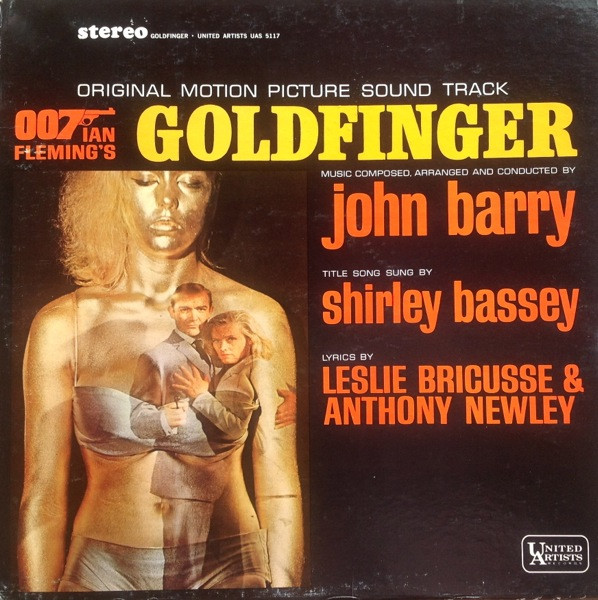 Goldfinger - Original USA Stereo Cover
Goldfinger - Original USA Stereo Cover
EARLIER SOUNDTRACK RELEASES
Goldfinger was released on both mono and stereo LPs in the UK and USA in 1964, but the UK version included three extra tracks. The US version included a special instrumental version of the theme song not present on the UK LP (nor heard in the film). In general, the stereo versions are to be preferred. The albums contain the film version of the title song; the mono version, with an alternative vocal, only existed on vinyl as a 45rpm single, and that was the one that most people heard away from the film.
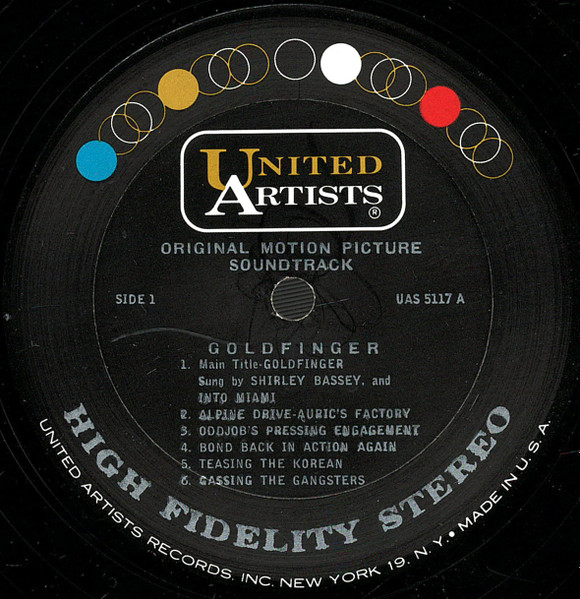 Record label from 1964 US Stereo Release
Record label from 1964 US Stereo Release
Most collectors agree that the 1964 UK version has superior sound (although I've not heard it).
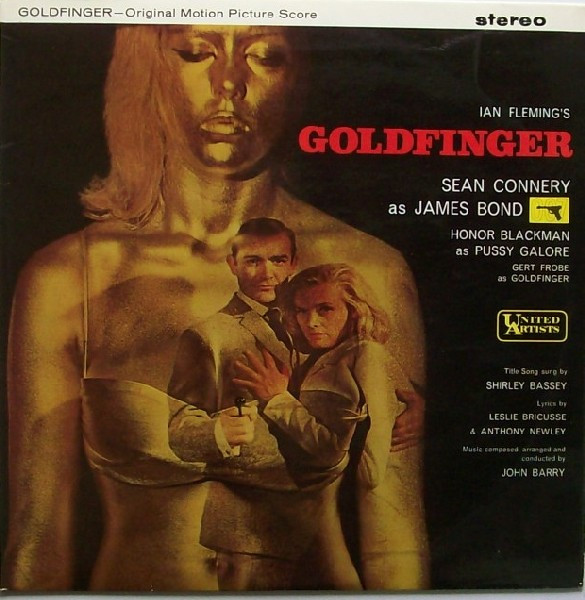
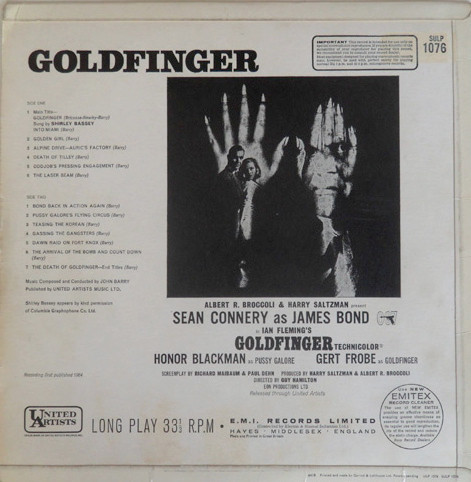 UK 1964 Stereo Release
UK 1964 Stereo Release
I have a later 1976 UK pressing on Sunset Records, in the Golden Film Music Series, which despite not being a first pressing nevertheless sounds excellent.
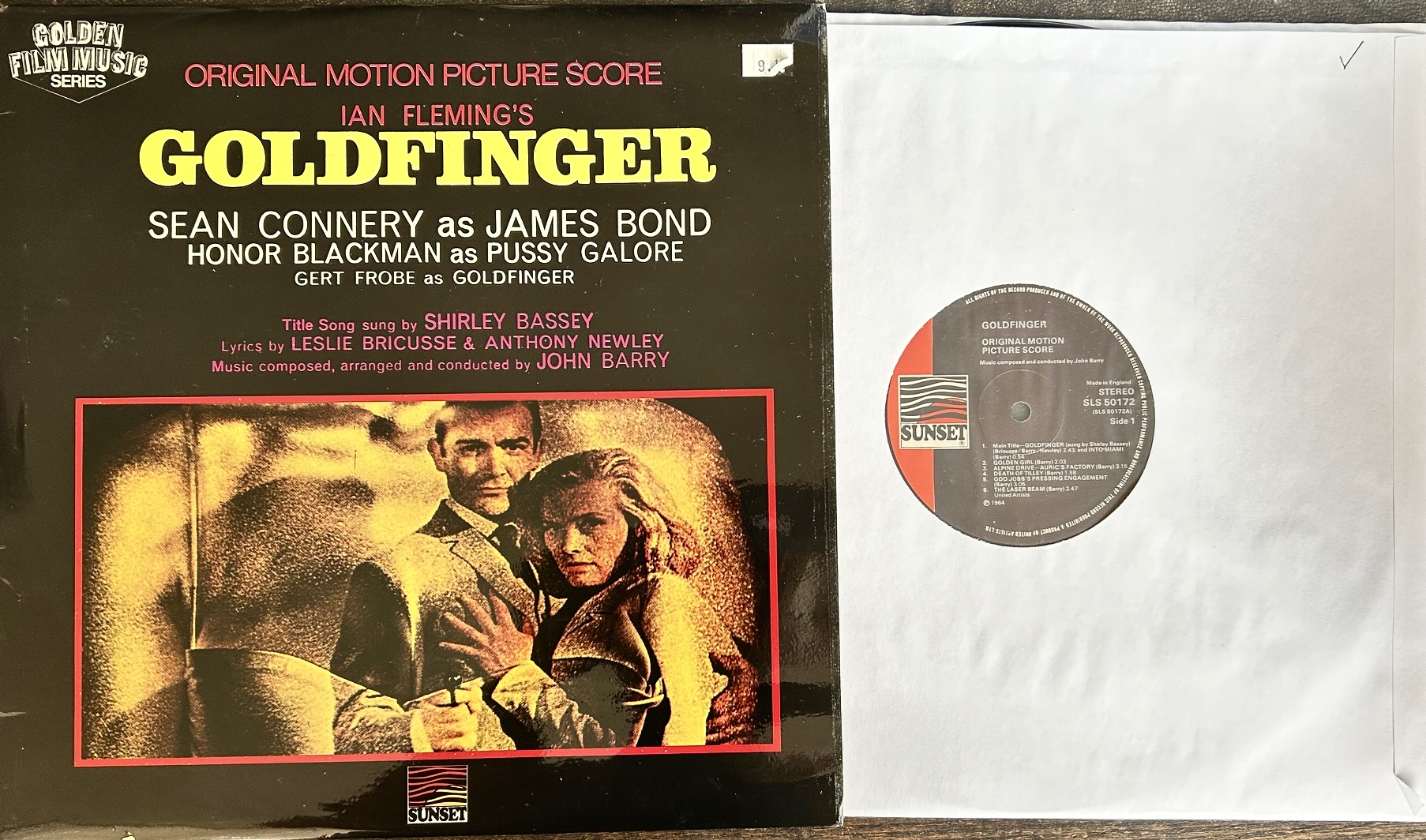
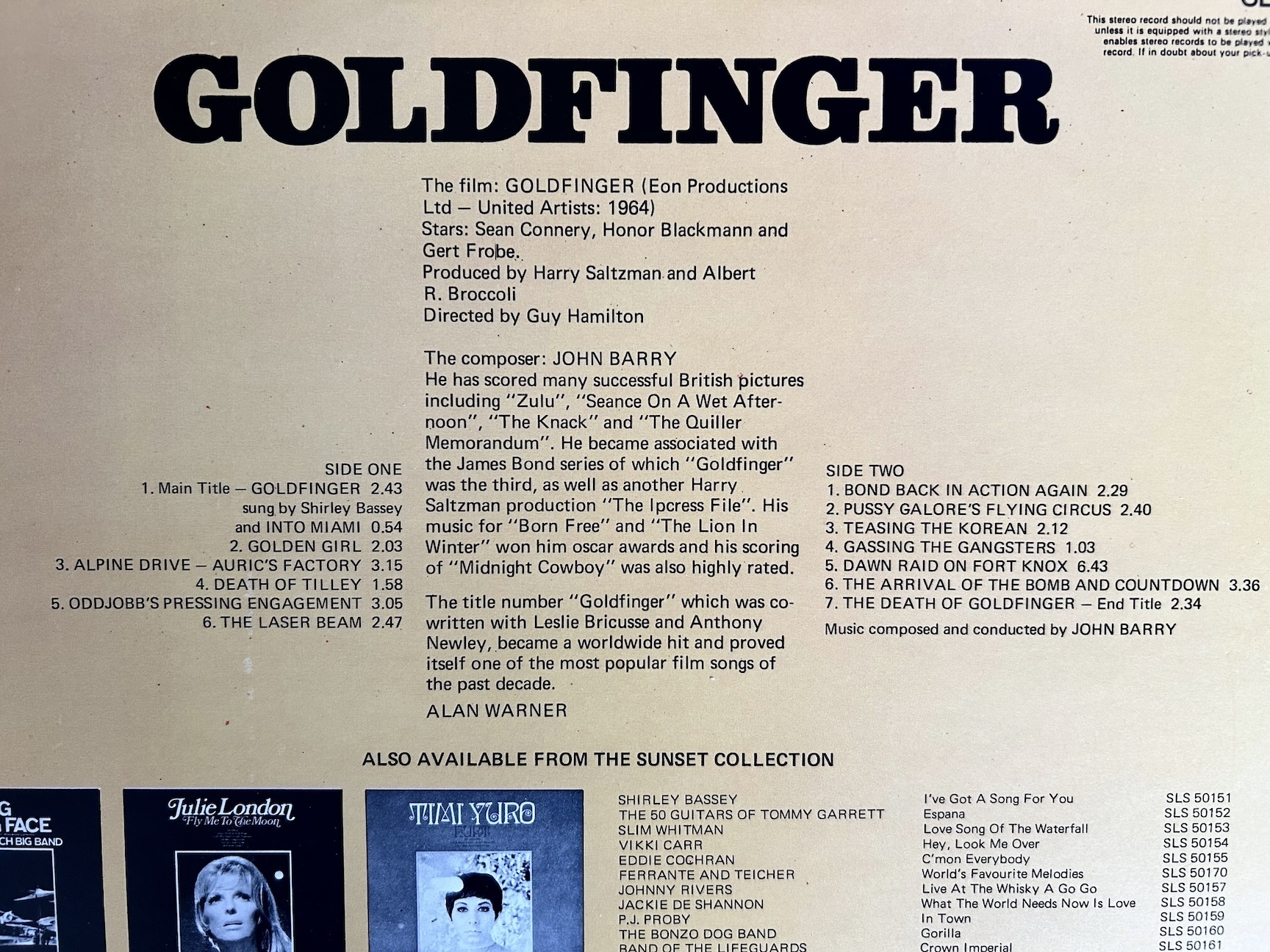 1976 UK Stereo Reissue
1976 UK Stereo Reissue
My early mono US pressing, a white label promo, has noisy vinyl, fairly typical for soundtrack records of the time.
An essential CD collection for the Bond completist is the 1992 double CD titled “The Best of James Bond 30th Anniversary Collection”. This gathered together not only three tracks found hitherto only on UK pressings - “Golden Girl”, “Death of Tilley”, and “The Laser Beam” - but also lyricist Anthony Newley’s fascinating demo of the title song.

It wasn’t until the 2003 Remastered 007 CD Edition that we got all the extra underscore tracks in one place, plus “Pussy Galore’s Flying Circus” and the Goldfinger instrumental, but there was no Newley demo or mono single version of the title track.
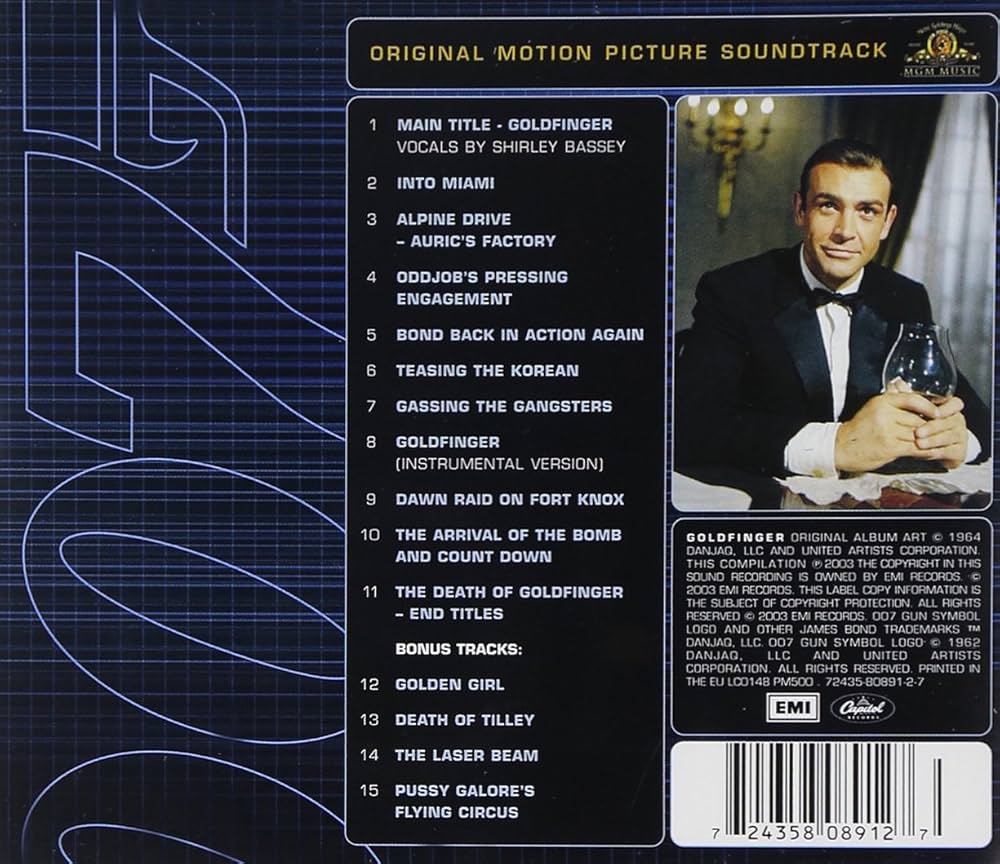
Finally, with this LaLaLand Records' deluxe, newly remastered edition, all the Goldfinger material that’s available, including the demo and mono single, is in one place. I say all the material that’s available because there are still some short cues you can only hear on the isolated music and SFX tracks on the Criterion laserdisc version of the film. Original production stems are long since lost and it was decided not to include these inferior sounding cues, taken from the laserdisc, in this edition.
 Goldfinger - The LaLaLand Records Reissue
Goldfinger - The LaLaLand Records Reissue
THE LaLaLand Records REISSUE OF GOLDFINGER
With immaculate presentation, including a lavishly illustrated booklet adorned by Jon Burlingame’s comprehensive essay, this release falls in line with all the other first rate reissues of the Bond soundtrack canon being given exemplary makeovers by film score specialist label LaLa Land Records. All cues are presented in the order in which they appear in the film, so instead of the title song the first thing we hear is "Bond Back in Action", opening with "The James Bond Theme".
Most importantly, the sonic makeover here is not one of incremental improvements. This important and historic score sounds as luscious, lustrous and gleaming as one could hope for, and then some. The team responsible is the same one involved in previous LaLaLand releases, with audio restoration by Chris Malone and remastering by Doug Schwartz, all working under the eagle ears of producer Neil S. Bulk.
From the opening pre-credits sequence, “Bond Back in Action”, the immediacy of the remastering is unmistakeable. The classic Opening Gun Barrel music hits you like a bullet, those jabbing brass chords making you jump, with real oomph in the bass. There’s a nice stereo spread, drier than on many later Barry scores, with spotlit instruments registering firmly so that the “close-up” musical moments have real presence. I love this style of sound engineering for movie scores (and hate it when we get too much of a reverberant concert hall acoustic, a tendency in the later Barry scores, and frankly for quite a few other film soundtracks in the 70s and 80s). The original session engineer was the legendary Eric Tomlinson whose name many readers will recognize from his work for John Williams on the original Star Wars films recorded in England with the London Symphony Orchestra.
 Eric Tomlinson at the Telefunken board at CTS Studios
Eric Tomlinson at the Telefunken board at CTS Studios
I was riveted by the sound and pace of this opening cue, and eagerly awaited the arrival of those iconic chords announcing the opening of the title song.
How many times have I heard this song, on soundtrack records, compilations on vinyl and CD? So often that I can readily admit I am kinda sick of it. But in its new incarnation? WOW!
Everything sounded immediate with fuller instrumental timbres. And when Bassey comes in, her voice hits like Goldfinger’s laser beam. Maybe on my 1976 UK pressing her voice sounded a tad more three-dimensional, but that could be down to my analogue chain, and the fabulous Zesto Audio Andros Spirit phono stage which breathes warmth and tangible organic presence into everything that passes through its circuitry and tubes - I love this piece.
What I realized was that part of the reason I had gotten turned off to this song was that it often sounds brassier (in a bad way), more strident, edgy even - especially her voice. Not so here. The electricity of the session comes across freshly minted, every detail revealed as part of the whole, with Bassey fulfilling the instructions given to her by Barry before the red light went on:
“Just get in front of the mic and belt it to the best of your ability.”
As Bassey recalls in Jon Burlingame’s sleeve notes:
“It was very sensual, I must say. And then came the end with that note, and I was holding it and holding it, looking at John and going blue in the face, and he’s going ‘Hold it just one more second’, and when it finished I nearly passed out. But anyway, it was exciting. And I never thought it would be a hit but it was.”
This is a score that is easy to listen to away from the film, and I gloried in the sound of this remastering, reveling in the imagination of Barry’s creative use of his orchestra to create that “Goldfinger” sheen of hard metal and menace, combined with glittering allure. The score oozes with the self-confidence of a master settling into his youthful stride, finding his musical voice, and thrilling us in the process.
Some highlights… The shock and horror of Bond discovering the gold painted body of Goldfinger’s cheating-at-cards accomplice, Jill Masterson (Shirley Eaton) - whom he has just bedded - comes across with renewed force in this remastering, those finger cymbals in your face but not strident (“Golden Girl”).
The “Laser Beam” cue I mentioned at the top of Part 1 of this article is striking in how it uses repeated melodic motifs over a pedal point, with unusual instrumentation (harps, low brass, muted trumpets, xylophone, tremulando and sickly chromatic strings) in an extended crescendo to create a real sense of jeopardy for 007.
The surreal terror as Bond witnesses Goldfinger’s criminal accomplices being gassed in Ken Adams’ stunning ranch house set turned killing zone comes over with real force (“Gassing the Gangsters”).
One cue I had completely forgotten was “Oddjob’s Pressing Engagement”, in which Barry channels the James Bond Theme and his jazz side as CIA agents mistakenly pursue Oddjob to a car compacter: the change in musical pace and style is not only palette cleansing, but shows just how versatile a musical stylist Barry could be. It really keeps the pace going during what could have been a somewhat pedestrian sequence.
Even the normally interminable “Dawn Raid on Fort Knox”, one of Barry’s signature marches, is bearable in its new sonic iteration, all trace of fatiguing sonic stridency and shallow bass banished.
The score for Goldfinger really is a masterclass in action film scoring: keeping the pace going where need be, amplifying the menace and sense of jeopardy, underlying the action, providing character moments and even helping to tweak the humor, and defining an aural landscape unique to the world of this particular Bond film, distinct unto itself. And let's not forget injecting that ineffable sense of "cool" so integral to the Bond brand. Composers of today's endlessly pounding, characterless scores for action films, all indistinguishable from one other, take note: this is how it's done.
In short, while not completely replacing my 1976 UK pressing (and, I imagine, UK originals), this latest CD remastering delivers the score in sound that refreshes the original, laying out all the detail clearly but not analytically, in a manner that sounds organic, even “analoguey”. It’s an exceptionally fine sonic makeover, even though it is digitally achieved and presented on CD.
The additional tracks open with the instrumental version of the theme song that appeared on the original US soundtrack album, but which doesn’t even appear in the film. I am unable to fully confirm this, but apparently the guitar solo here is played by a very young Jimmy Page during his London session days (and not Vic Flick, who does the guitar work elsewhere).
Whoever is indeed playing, his guitar twangs impressively over huge bass guitar and pounding drums, and it’s a really fun, driving alternative to the vocal version. (Anyone who can definitively confirm or deny Page’s contribution to this track, please chime in below). I must also acknowledge the bluesy sax solos of Johnny Scott throughout the score.
Rounding out the CD are the Anthony Newley demo of the title song (kinda weird but fun to have), and the mono single version of Bassey’s title song.
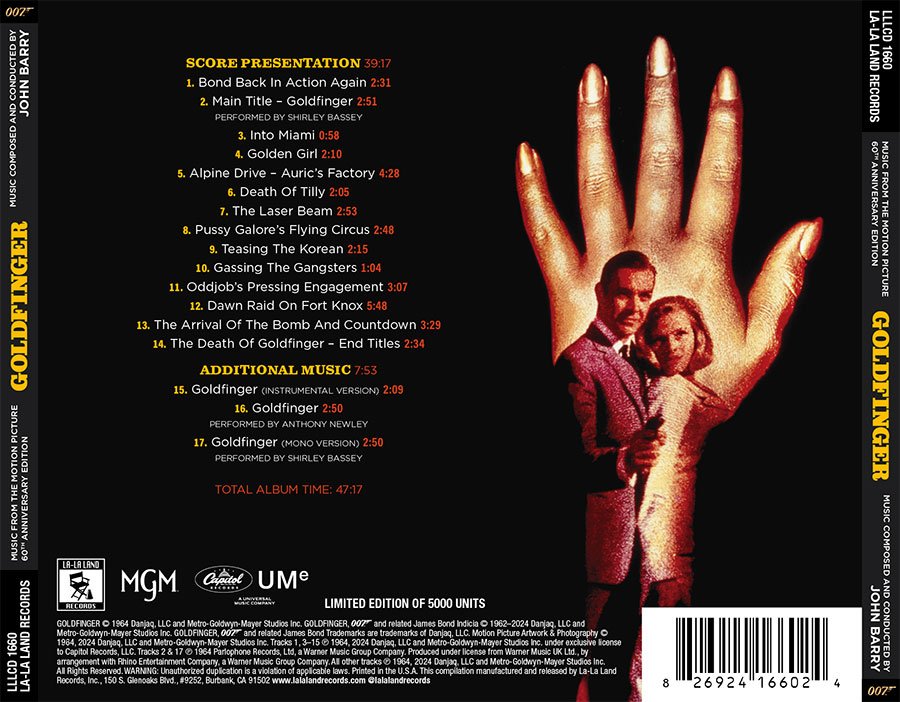
Yup, this new LaLa Land release achieved something I didn’t think possible: it revived the sonics of this landmark, over-familiar score to such a degree I fell in love with it all over again.
I had mixed feelings about the earlier LaLa Land releases of Live and Let Die and Octopussy (the latter as much because of the lower quality of Barry’s score and its original recording as its remastering), but I have no hesitation in declaring this reissue of Goldfinger an unqualified triumph and an essential purchase for all film score lovers, especially given the presence of all possible additional tracks and the handsome booklet and comprehensive essay from Burlingame. Like the superb box set of John Williams’s scores for the first three Harry Potter films, LaLaLand Records has given us an essential artifact of pop culture - and film music - in a suitably golden incarnation.
But please note: this is a limited edition of 5000 copies, so do not delay too long if you’re interested. While it may show as out of stock on the LaLaLand website, represses are usually fairly prompt, and when the release is finally going out of print for good, plenty of warning is given (if you are on the mailing list).
It all bodes very well for the next two releases in what I hope will be a complete run of Bond soundtracks from LaLaLand Records - The Man with the Golden Gun and Moonraker. Stay tuned for those reviews - like they say in the movies - coming soon…
Purchase directly from the LaLaLand website.
Music

Sound

Goldfinger: Original Film Soundtrack
Music Composed, Arranged and Conducted by John Barry
Title Song sung by Shirley Bassey; Lyrics by Leslie Bricusse and Anthony Newley
Guitar Solos: Vic Flick; Saxophone Solos: Johnny Scott
Engineer: Eric Tomlinson
Recorded at CTS Studios, Bayswater, London
60th Anniversary Edition produced by Neil S. Bulk
Executive Produced for LaLaLand Records by MV Gerhard and Matt Verboys
Additional Engineering by Chris Malone at Malone Digital
Album Mastered by Doug Schwartz at Mulholland Music, Chatsworth, CA
Digital Transfers by Post Haste Digital, Los Angeles, CA
Project Assistance: Frank K. DeWald and Jim Titus
Program Notes by Jon Burlingame
Art Direction by Dan Goldwasser at Warm Butter Design
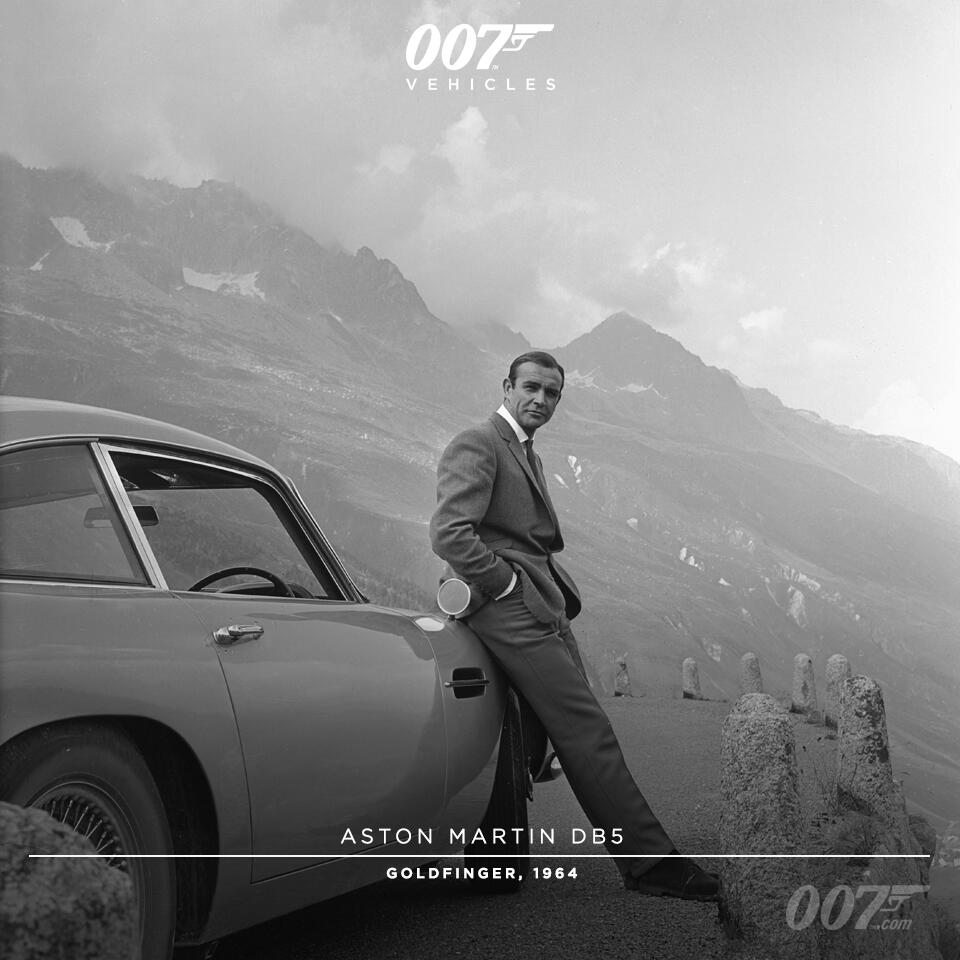


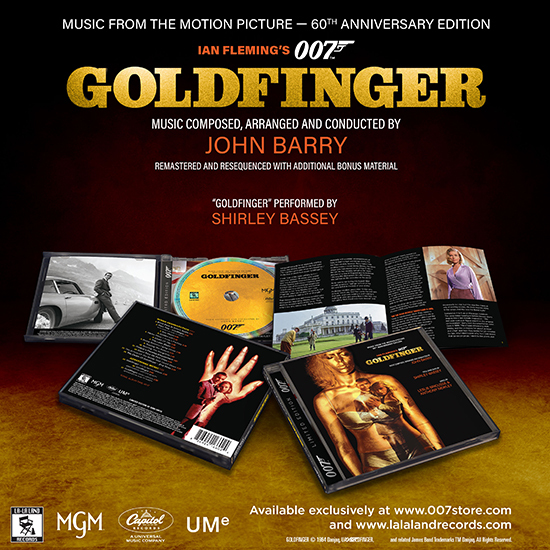


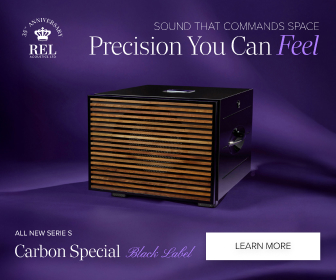

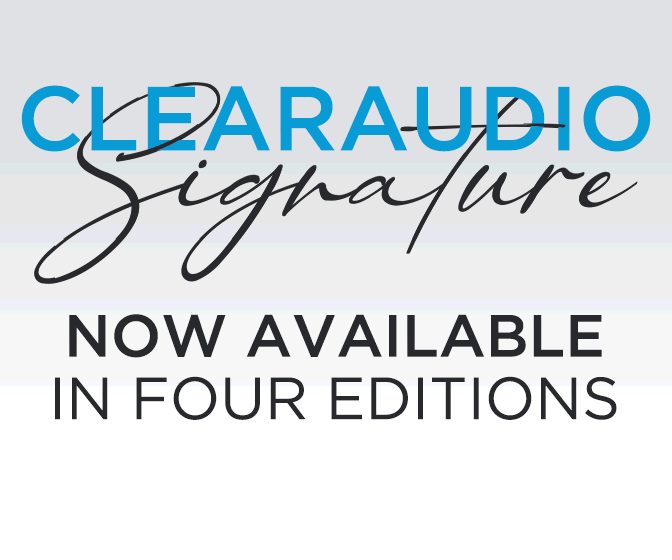
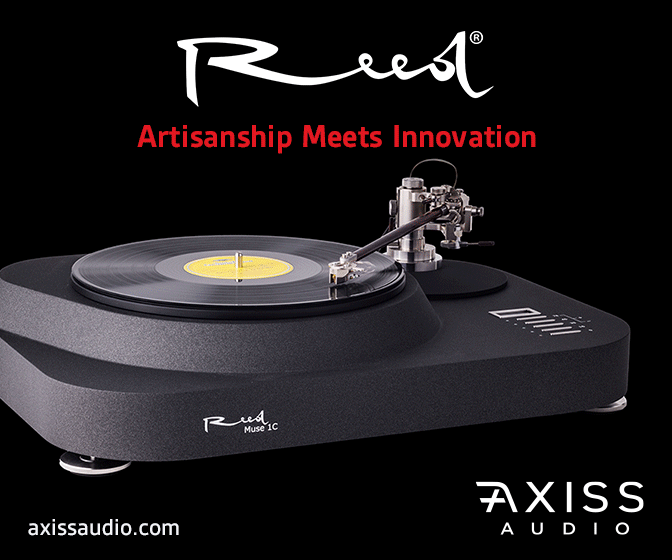

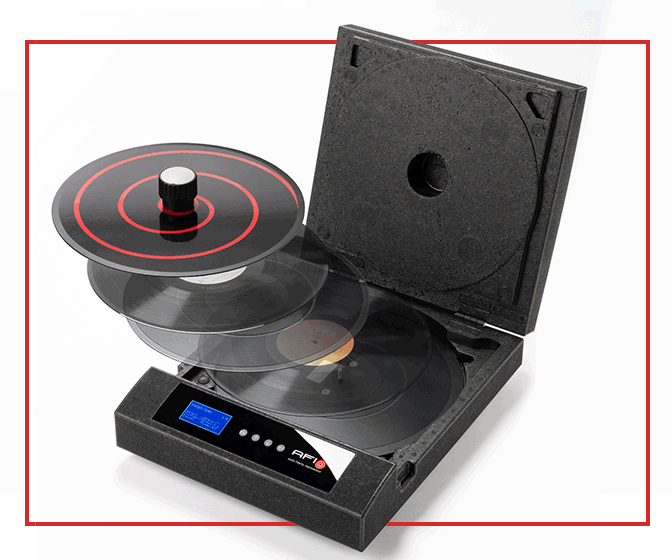

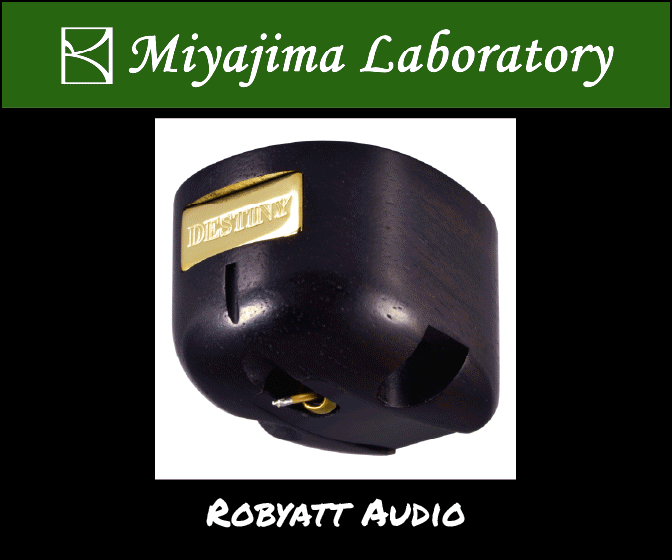
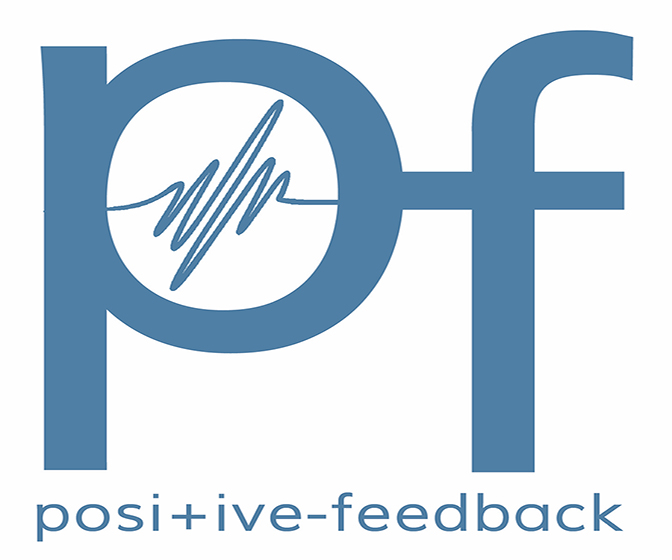
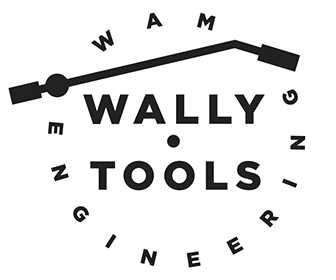



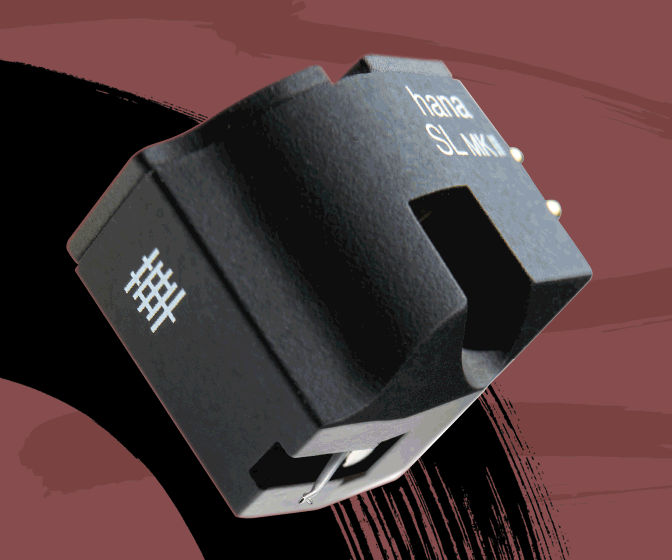

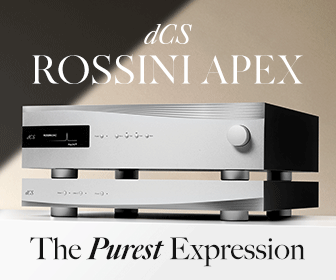
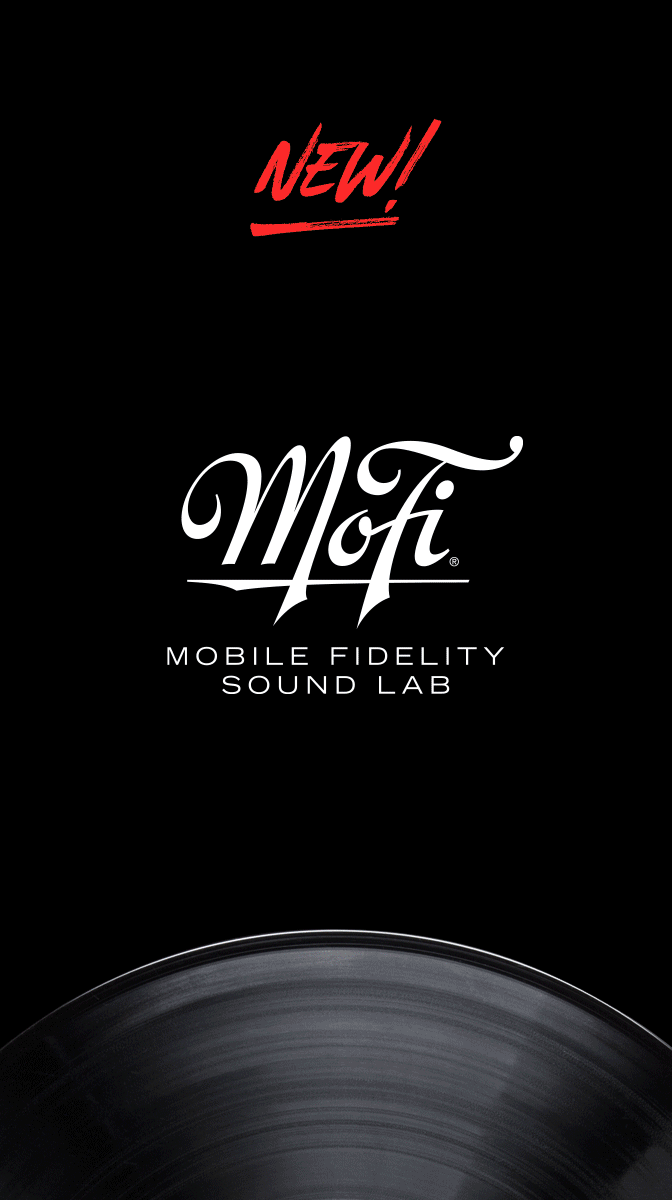
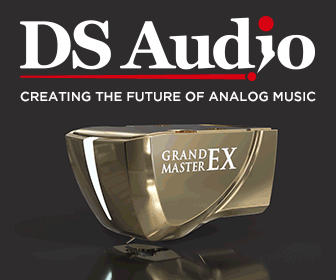
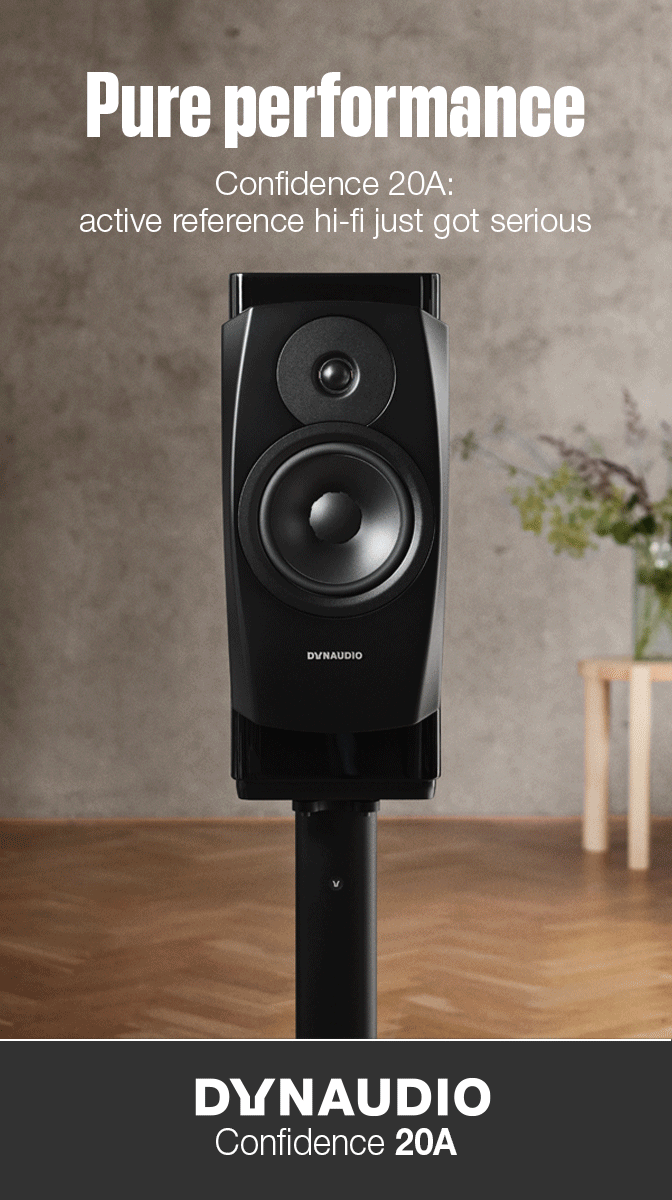

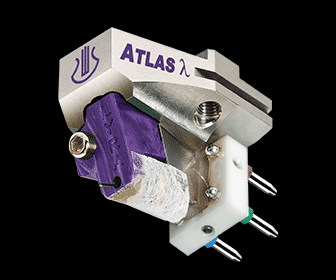

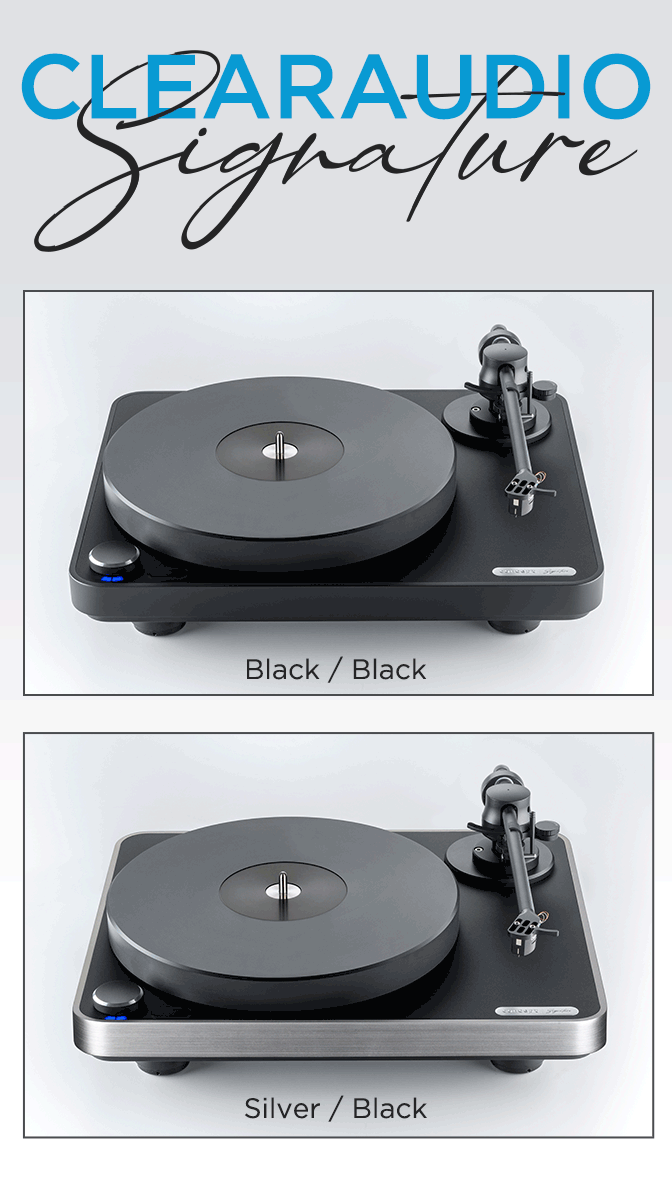
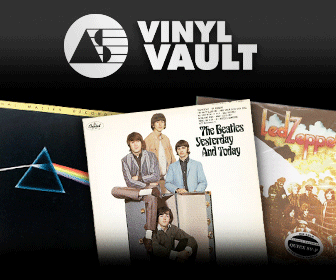
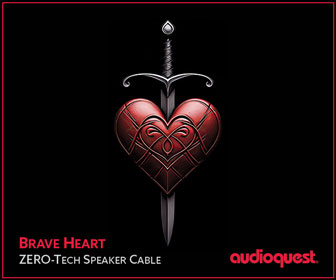
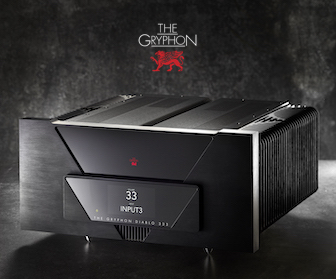
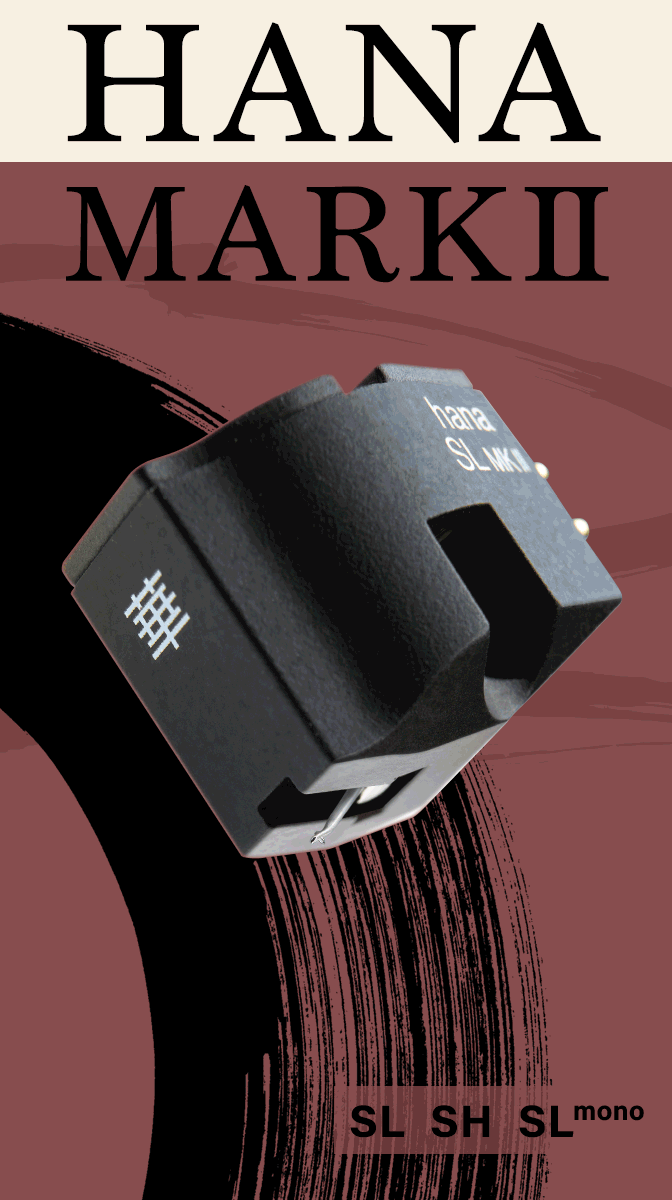


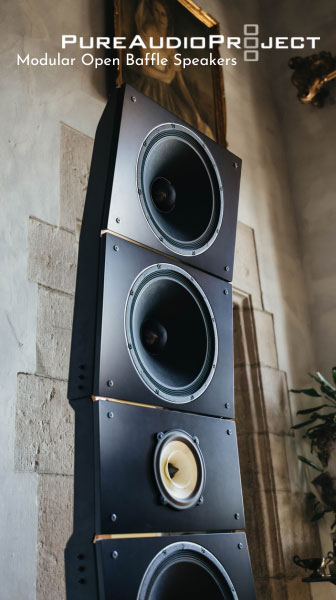
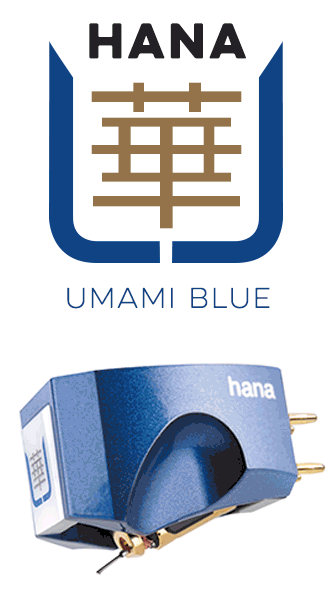





.png)








